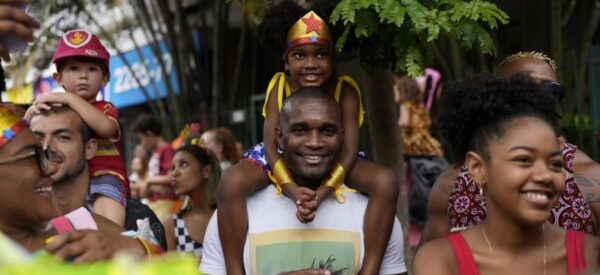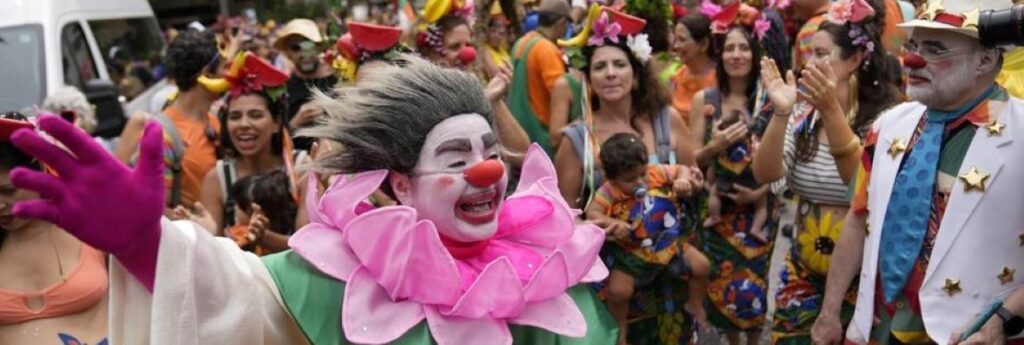Glittery and outrageous costumes were prepared again. Samba songs were ringing out ’til dawn at Rio de Janeiro’s sold-out parade grounds. And hundreds of raucous, roaming parties were once again flooding the streets over the weekend as the city’s iconic returned to form for the first time since the pandemic.
The COVID-19 crisis last year prompted Rio to delay Carnival by two months, and watered down some of the fun, which was attended mostly by locals. Brazil’s federal government is expecting 46 million people to join the festivities that officially began Friday and run through tomorrow (Feb. 22). That includes visitors to cities that make Carnival a world-famous bash, especially Rio but also Salvador, Recife, and metropolitan Sao Paulo, which has recently emerged as a hotspot.
Many Brazilian mayors, including Rio’s, were marking the start of the celebrations on Friday by symbolically handing the keys to their cities to their Carnival Kings. And the first street parties of the Carnival weekend kicked off, with revellers’ costumes ranging from Pope Francis to the devil himself.
“We’ve waited for so long, we deserve this catharsis,” Thiago Varella, a 38-year-old engineer wearing a Hawaiian shirt drenched by the rain, said at a bash in Sao Paulo.
Most tourists were eager to go to the street parties, known as blocos. Rio has permitted more than 600 of them, and there are more unsanctioned blocos. The biggest blocos lure millions to the streets, including one bloco that plays Beatles songs with a Carnival rhythm for a crowd of hundreds of thousands. Such major blocos were called off last year.

“We want to see the partying, the colours, the people and ourselves enjoying Carnival,” Chilean tourist Sofia Umaña, 28, said near Copacabana beach.
The premier spectacle is at the Sambadrome. Top samba schools, which are based in Rio’s more working-class neighborhoods, spend millions on hour-long parades with elaborate floats and costumes.
“It’s such an important party … It’s a party of culture, happiness, entertainment, leisure and, primarily, its commercial and social side,” said Jorge Perlingeiro, president of Rio’s league of samba schools.
He added that this year’s Carnival will smash records at the Sambadrome, where some 100,000 staff and spectators are expected each day in the sold-out venue, plus 18,000 paraders.
At the Heaven on Earth street party in Rio’s bohemian Santa Teresa neighbourhood, musicians pounded their drums as some revellers climbed fences to watch the scene from above the pulsing throng. Anilson Costa, a stilt-walker, already had a prime view from his elevated perch. Covered in flowers and brightly colored pom-poms, he poured a watering can labeled “LOVE” over people dancing below him.
“Seeing this crowd today is a dream, it’s very magical,” said Costa. “This is the post-pandemic Carnival, the Carnival of democracy, the Carnival of rebirth.”

